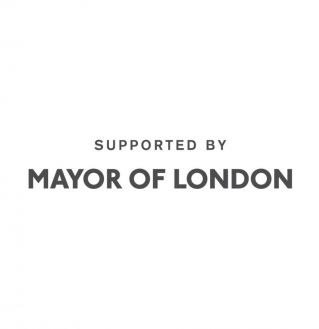New London Architecture
Culture after Covid
Friday 06 November 2020

All parts of society have stunned us with the speed, scale and imagination of their responses to the COVID-19 pandemic. That includes the cultural sector which has been hit as hard as any, but has responded with innovation and agility.
Most cultural attractions – theatres a notable exception – reopened after the first Covid-19 lockdown, but not to the world they knew before. Social distancing has decimated capacities. London’s International visitors – who made up much of the audience - have disappeared. Visitors from Outer London and the rest of the UK have dried up. The worst-case scenario looks bad. We estimated the impact for Central London Forward - projecting a loss of over 50,000 jobs in the cultural sector of central London in 2020, with three-quarters among freelancers.
These huge impacts are accelerating structural trends in the sector that were already underway.
First, the acceleration of digital. With no physical audiences, cultural institutions moved quickly to increase and improve their digital offers. The pandemic has driven real innovation. But, when compared to the music, games or television industries, venue-based organisations still have much more scope to ramp up digital engagement. And digital audiences drive real world engagement. Data from the US show institutions that engaged digitally or in the open air were the first to see visitors back through the door. There is now a ‘land grab’ for digital audiences, for their own sake and as an investment for future physical audiences. However strong their physical spaces or artistic programming, cultural organisations without a strong digital offer will be left behind.
Second, quality of place. Cities are thinking more about how their various parts fit together. Our World Cities Culture Forum has heard cities like Milan describe holistic plans for life with the virus. Introducing bike lanes, reopening factories and restarting the night-time economy all fit together. In London, pedestrianizing Soho has dramatically improved the experience of visiting. How long before theatres also begin to benefit from these initiatives?
Third, outer London innovation. London's cultural infrastructure is still a hub and spoke model. A trip to the theatre is normally to the West End. Now policymakers are looking at ideas like the fifteen-minute city to get more local infrastructure close to home. So we see greater engagement in local cultural hubs and destinations. In turn, this has consequences for changing artistic programming. Will a local suburban audience want the same shows as Inner London audience of tourists and theatre aficionados?
Fourth, “leaning out of windows”. Cultural organisations are becoming more active and engaged with their local communities. Since March, we have been more connected to the place we live; in touch with family and friends; connecting virtually with communities of interest. Now is a decisive moment for cultural institutions to shift the dial on their engagement with the communities they serve.
The cultural sector has a major role to play in the recovery, whenever it comes. Our research for Culture Mile shows artists draw innovative businesses into an area and get people back into the office, when it’s safe to do so. So it is a critical time for the built environment sector to engage with the cultural sector.
The shortlist for the Experiencing Culture category at this year's awards looks prescient. The projects are largely local and community focused. They are projects that sit at the heart of communities. So we think they are projects that will work for London’s post-Coronavirus future.
EXPERIENCING CULTURE Shortlist
Category sponsored by BOP Consulting
Civic buildings, museums, galleries, theatres, libraries, sports facilities, community hubs and youth centres – projects that put cultural experience at the heart to create better places for local residents and international visitors.
Battersea Arts Centre, Wandsworth by Haworth Tompkins
Civic buildings, museums, galleries, theatres, libraries, sports facilities, community hubs and youth centres – projects that put cultural experience at the heart to create better places for local residents and international visitors.
Battersea Arts Centre, Wandsworth by Haworth Tompkins
EMD Walthamstow, Waltham Forest by Pilbrow and Partners
English National Ballet, Tower Hamlets by Glenn Howells Architects
Fairfield Halls, Croydon by MICA
Livesey Exchange, Southwark by what if: projects ltd
Plumstead Library, Greenwich by Hawkins\Brown
Southbank Undercroft Skate Space, Lambeth by Feilden Clegg Bradley Studios
Surrey Docks Farm, Southwark by Pup Architects
The New Purley Mosque, Croydon by Benedict O'Looney Architects
The Yellow, Brent by Flanagan Lawrence
Wellfit+Hardess, Loughborough Junction, Lambeth by Metaphorm Architects
Related
News
Embedding Culture in Development: Insights from NLA’s Culture Panel
HOLBA's Deputy Chief Executive Mark Williams reflects on the NLA Expert Panel on Culture’s focus on making culture a cor...
News
The importance of culture in the built environment
HOLBA's Deputy Chief Executive Mark Williams reflects on the NLA Expert Panel on Culture’s focus on cultural infrastruc...
Stay in touch
Upgrade your plan
Choose the right membership for your business
Billing type:
Small Business Membership
£90.00
/month
£995.00
/year

For businesses with 1-20 employees.
Medium Business Membership
£330.00
/month
£3,850.00
/year

For businesses with 21-100 employees.
View options for
Personal membership














